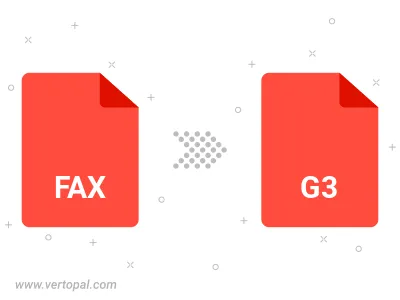Convert FAX to G3
Convert FAX images to G3 format, edit and optimize images online and free.

The FAX file extension, short for "facsimile", is primarily associated with digital fax documents. These files are typically saved in TIFF format and are used to store images of documents sent or received via fax software. Historically, fax technology allowed the transmission of scanned printed material over telephone networks, a practice that became widespread in the 1980s and 1990s. Today, FAX files facilitate the digital handling of these documents, enabling easy archiving and viewing with compatible image viewers.
The G3 file extension refers to the CCITT Group 3 Fax Image, a standardized format developed by the Consultative Committee for International Telegraphy and Telephony (CCITT), now known as ITU-T. This format was created to efficiently compress black-and-white fax documents for transmission over telephone lines. It employs a method called Modified Huffman Coding for data compression, enabling reduced transmission time and bandwidth usage. G3 was widely adopted in the 1980s and 1990s as the primary standard for fax transmissions, ensuring compatibility across different fax machines and systems.
Select any FAX image you wish to convert by clicking the Choose File button.
Use any available FAX to G3 tools on the preview page and click Convert.
Let the conversion process finish, then download your G3 image.

To change FAX format to G3, upload your FAX file to proceed to the preview page. Use any available tools if you want to edit and manipulate your FAX file. Click on the convert button and wait for the convert to complete. Download the converted G3 file afterward.
Follow steps below if you have installed Vertopal CLI on your macOS system.
cd to FAX file location or include path to your input file.Follow steps below if you have installed Vertopal CLI on your Windows system.
cd to FAX file location or include path to your input file.Follow steps below if you have installed Vertopal CLI on your Linux system.
cd to FAX file location or include path to your input file.